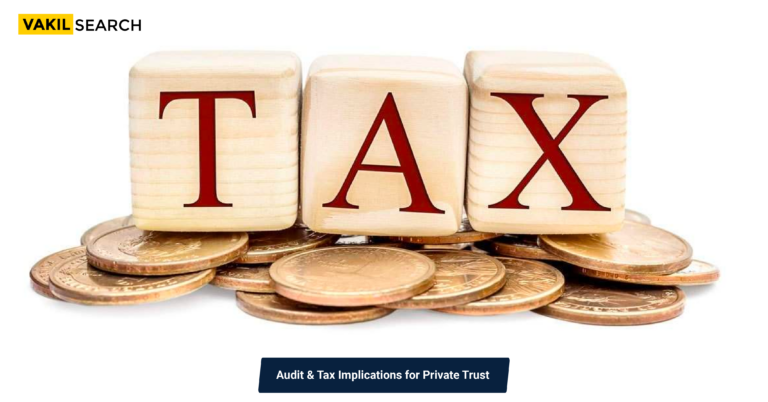In this blog, we will discuss Form 10A: Trust re-registration process, including why it needs to be filled out by trust, and how they can do it.
The Central Board of Direct Taxes announced Form 10A to make it possible for trusts and NGOs to apply for the migration of their registrations to the new registration system in accordance with Section 12AB
Form 10A must be used to submit any trust registration applications. Form 10A is used for the following purposes:
- For trusts or institutions that are now in existence and have already been registered under section 12A or section 12AA before April 1, 2021
- For trusts or institutions that have just been created, who are requesting provisional registration under section 12AB
All trusts, organisations, institutions, funds, and hospitals registered under Sections 12A, 80G, or 12AA of the Income Tax Act are required by the Central Board of Direct Taxes to get new registrations in the form prescribed by Section 10(23C) of the Income Tax Act.
The applicant must submit a Form 10A application to the Principal Commissioner or another Commissioner designated by the CBDT on or before the deadline.
In this blog, we will discuss why filling out form 10A is mandatory for trust and how it can be done.
What is a Trust?
A trust is a fiduciary relationship in which the trustor, or first party, grants the trustee the authority to hold title to property or assets for the benefit of the beneficiary, or second party.
Creating a trust can ensure that a person’s assets are distributed in accordance with their wishes by providing legal protection for those assets. Trusts can also be useful in reducing estate or inheritance taxes in certain situations, as well as minimizing paperwork and saving time.
Parties in a Trust deed
- Author/Settlor/Trustor/Donor: the person who wants to transfer his assets and places their trust in another to establish the trust.
- Trustee: The individual who accepts the trust to establish trust
- Beneficiary: The individual who will benefit from the trust in the near future.
Who Can Create a Trust?
Trust can be created by:
- Anyone capable of entering into contracts, including individuals, AOPs, HUFs, businesses, etc.
- It is necessary to obtain the consent of a Principal Civil Court with original jurisdiction if a trust is to be established by or on behalf of a minor.
Also, it depends on the laws in effect at the time and the extent to which the trust’s creator intends to dispose of his holdings.
Types of Trusts in India
- Private Trusts: A closed group is the target of a private trust. In other words, it is possible to identify the beneficiaries. An example would be a trust established for the author’s friends and family.
- Public Trusts: A public trust is established for a large group, i.e., the general public. For instance, charitable institutions run by non-profit NGOs for the general population.
A minimum of two people are needed to establish a trust, but society must have at least seven members to be established.
Purpose of Form 10A
The following is a detailed explanation of Form 10A’s intended use:
- As mentioned above, Form 10A is used for re-registration under section 12AB for trusts or institutions that have already been registered or approved under these provisions before 1-4-2021.
- Trusts or institutions that have just been created and are requesting registration under section 12A for the first time should use the new Form 10A.
- Also, the new Form No. 10A must be used by trusts and institutions that have been around for a while but have never registered under Section 12A.
For registration or approval, the new Form No. uring the existence of the trust or institution, 10A can be used only once. All future renewals shall be made on Form No. 10AB.
Eligible Applicants to file Form 10A
The following organizations must submit Form No. 10A in order to register under Section 12A of the Income Tax Act:
- Already Registered Organizations: Before 1-4-2021, organisations that were previously registered under either of the former sections 12A or 12AA must submit a Form No. 10A application to be reregistered under section 12AB.
- Existing Unregistered Organizations: Organizations that have already started their charitable works but are not yet registered with the income-tax authority under any of the former sections 12A or 12AA before 1-4-2021 must submit a fresh registration application in Form No.
10A under section 12AB. For a maximum of three years, these organisations will be allowed provisional registration.
- Newly Established Organizations: New Organizations must submit Form No. 10A, Application for Provisional Registration, in order to register with the income tax authority in order to qualify for an exemption under Sections 11 and 12 of the Income-tax Act.
Click here to get Trust Deed Registration
Documents Required for Form 10A
Form No. 10A: Trust Re-registration Process includes:
- The official document attesting to the trusts’ or NGOs’ founding.
- Registrar of Companies, Registrar of Firms and Societies, or Registrar of Public Trusts registration certificate.
- If the applicant is registered under the Foreign Contribution (Regulation) Act, 2010, Certificate of Registration (42 of 2010).
- Existing order granting registration under Income Tax Act sections 12A, 12AA, or 12AB.
- Order rejecting an application for registration under Section 12A, Section 12AA, or Section 12AB.
- The applicant’s annual accounts for the year for which those accounts have been made up.
- Self-certified copy of the audit report in accordance with section 44AB’s requirements The records attest to the object’s adoption or modification.
These all documents are needed for filling form No. 10A: Trust Re-registration Process.
How to File Form 10A Online?
The Income Tax Act Form 10A filing process is simple and can be completed online.
- Visit the income tax e-filing portal’s official website at https://incometaxindiaefiling.gov.in
- Choose “E-file” from the menu on the website’s upper left. Select “Income Tax Forms” after that.
- Then, from the drop-down list, choose “Assessment Year” and “Form 10A.”
- Choose “Prepare and submit online” from the selection under “Submission mode,” then click “Continue.”
- Complete the form after carefully reading the instructions.
- After double-checking all the information, click the “Submit” button to finish the procedure.
If your charitable or religious trust was recently established and has not yet been registered under any prior laws, or if your trust has already been registered under existing laws like Section 12A and 80G of the Income Tax Act of India, 1961, you can file Form 10A.
Conclusion
Even though completing Form 10A is usually a simple process but when you’re a working professional, it can become a hassle. This is why you need a partner like Vakilsearch who can help you with your trust registration process.
For further information, get in touch with the experts at Vakilsearch. With their years of experience and skilled legal experts, they can help you with everything from establishing a trust to filling out Form 10A.
Read more,










